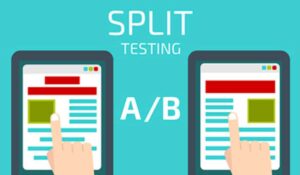You may have heard of the term “value proposition”, but what is it and why does it matter?
Your value proposition tells your prospects why they should choose to do business with you instead of your competitors. It makes the benefits of your products or services crystal clear from the outset so your prospects can make an informed decision.
Value proposition, benefits, and cost
Your value proposition is a balance between the perceived benefits and costs of your product or service. Your prospects will act on your offer or call to action if they perceive it to be greater in use value, than the cash value they are paying for it.
It goes without saying that the more value you can offer your prospects the more attractive your product or service will appear to them. But in order to be effective, you have to offer your customers more value than you charge them for.
The value (or perceived value) has to outweigh the perceived costs in your prospect’s mind. Then your offer will be a no-brainer for them. Your prospect’s motivation to act on your offer is determined by how they perceive your value proposition.
Prospect Motivation = Perceived Benefits – Perceived Cost
If someone was offering a product with a market value of $100 for a cash price of $100, it would seem like a reasonable deal. You get what you pay for, so it seems fair. But if they were offering you a product worth $100 for a cash price of $50 it would seem like a great deal! Now you are getting more than what you paid for, and this makes the purchase decision easier and increases the motivation to act.
If you fail to effectively communicate your value proposition you will lose out on potential customers who won’t see the benefit of your product or service. That’s why it’s important to know what your customers are looking for and to effectively communicate the fact that your product or service can give it to them.
What is important to your customers?
Your value proposition should clearly state the features and benefits that your product or service offers.
It should be about more than just tangible product features – it is also about the intangible benefits they will feel when they use your product or service.
Example:
Uber’s value proposition is that they offer an easier and more convenient way to get around compared to a traditional taxi firm. One of the tangible features and benefits of using Uber is that you don’t have to have cash on you to use the service. That makes it super convenient for when you need a ride home at the end of a night out, but don’t have any cash on you.
The intangible benefit of this is that it makes customers feel safer, and gives them reassurance that they can get a ride home without having to worry about cash. You no longer have to stop off at a cashpoint in the middle of the night to take cash out to pay your driver. You don’t have to worry about carrying large amounts of cash on you. You don’t have to pass on buying that last drink because you’re saving that cash for a taxi home.
The pay-less feature of the Uber app enables users to feel more relaxed on a night out knowing they can call an Uber at any time, even if they don’t have cash on them. Cashless payment is a feature. Being able to get a cab without carrying cash is a benefit.
The benefits of a product or service are important to prospects, and can influence how they feel. The importance of the feelings these benefits bestow on your customers should not be underestimated.
Tangible features vs intangible benefits
The old saying is that people buy on emotion and justify with logic. That’s why your value proposition should be a mixture of the tangible features and the intangible benefits of your product or service.
You need to identify what benefits your prospects will get from using your product’s features. The tangible features are normally the qualities or attributes of your product. They are the specs or characteristics of your products and services. The intangible benefits are what your customer gets from using your product.
Benefits normally resonate on an emotional level with your prospects. They are how your product or service makes them feel. People don’t buy for features, they buy for benefits. That’s what they are really looking for, and it’s what will persuade them to buy from you rather than your competitor.
Check out my post on Features vs Benefits for a more in-depth look at the differences between the two.
Identifying your value proposition
You can’t explain every one of your product’s benefits and features in every advert or landing page. That would probably be overwhelming and make your ads and landing pages look like information overkill.
You need to focus on the key features and benefits that are important to your prospects and customers.
Points of parity and points of difference
In order to find these important attributes you have to look at:
- Your points of parity
- Your points of difference
Your points of parity
These are features of your product or service that are important to your prospects, and which your competitors also offer. They can be thought of as the bare essentials.
Your prospects expect these features from your product or service. You need to tell your prospects that you offer these essentials, but talking about them won’t win you any brownie points or differentiate you from your competitors.
Your points of difference
These are the features that your product or service offers, that your competitors don’t. These are the features that set you apart from your competitors.
You want to emphasise and scream about these features in your marketing. Communicating these clearly will differentiate you from the rest of the market, and make you stand out.
Certain points of differentiation will appeal to certain segments of your target market more than others. That’s why it’s important to understand your audience and to segment them appropriately.
When you have segmented your market correctly, you can target them with marketing messages that appeal more closely to the benefits and features they value most. This increases the relevance of your ad, call to action, or offer, and they will be more likely to follow through on the desired action or purchase.
Understanding what makes your product or service unique from your competitors is important. Once you know your points of difference you need to share them with your prospects. Your prospects are looking for this benefit, so if you offer it through your product make sure you tell them about it!
When you create ads or write sales copy you should place your number 1 benefit in the headline. Your headline is what your prospects first see – it’s what stops them in their track, grabs their attention, and makes them read the rest of your copy. When you put your number one benefit in your headline your prospects will be drawn to it and encouraged to read the rest of your copy or click on your ad.
Check out this post I wrote which has some great tips on how to write effective headlines.
Test and re-test
Like most things that form part of your marketing you should adhere to the ABC way of thinking – Always Be Testing!
Your value proposition is no different. It should be tested continuously. You should test how you phrase it, and how you communicate it. Test your value proposition in your ads, sales copy, and landing pages.
See which one performs better, and try to improve on it. Test different value propositions with different segments of your target market and see which ones resonate. When you know which one resonates best with each segment of your audience, you’ll have a greater understanding of which features and benefits each segment of your market value most.
The more relevant you can make your ads, landing pages, and sales copy, the better they will perform and convert. Communicating your value proposition clearly helps your prospects decide if what you’re offering is for them or not.
Keep a log of your tests and results so you can refer back to them and use them for future marketing campaigns.




